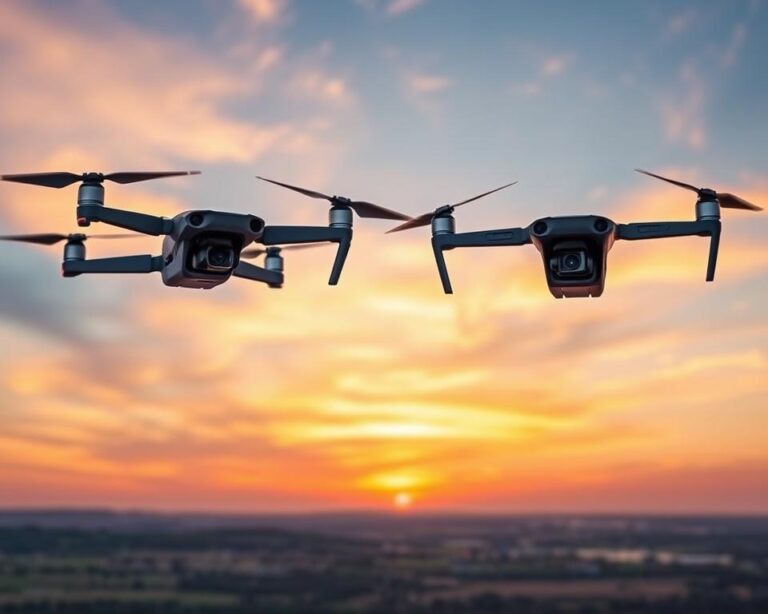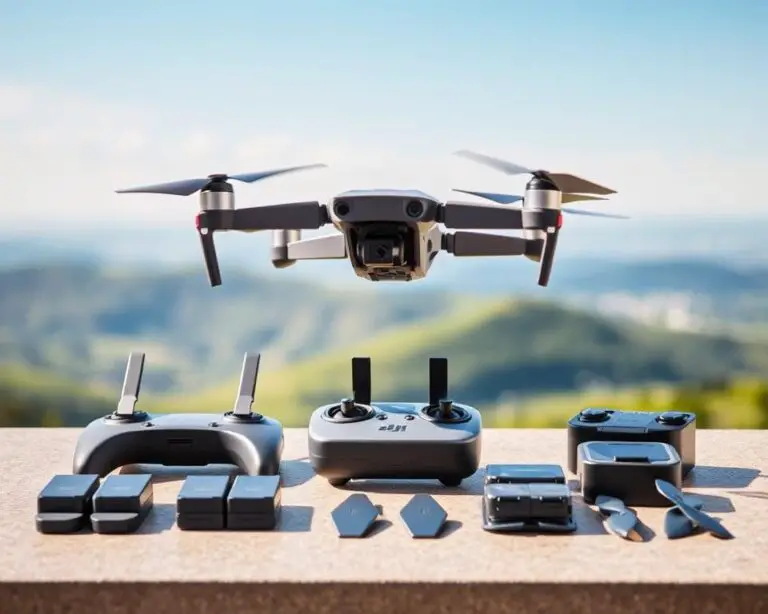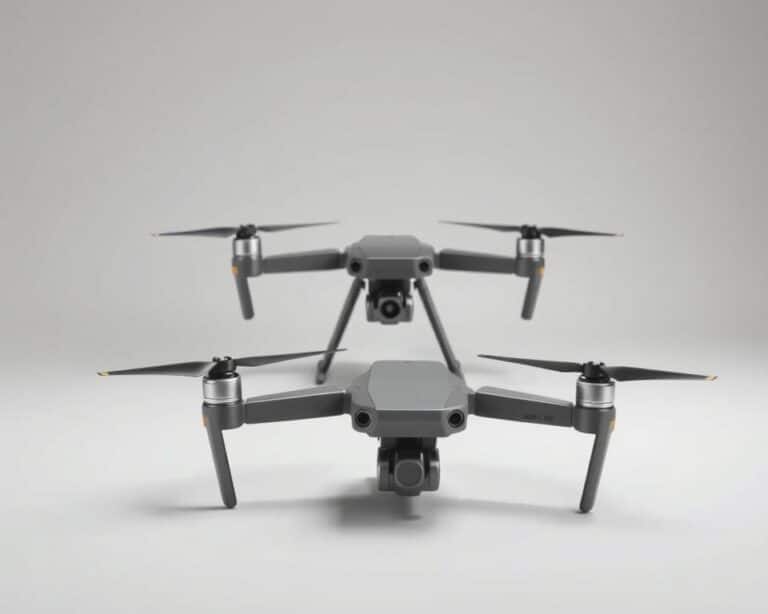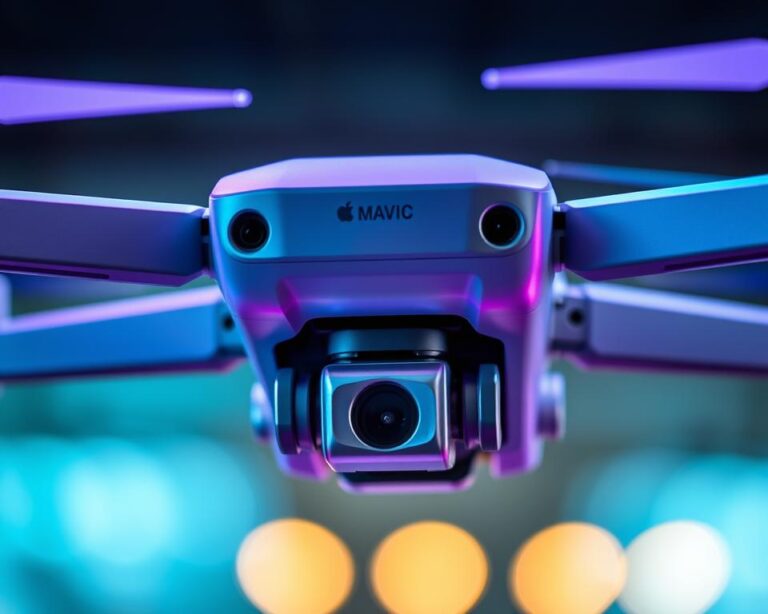DJI’s Upcoming 2025 Drone Line Up: What to Expect
The aerial photography world is buzzing with anticipation as we look toward the future DJI drones set to take flight in 2025. As the undisputed leader in consumer and professional unmanned aerial vehicles, DJI continues to push boundaries with each product generation.
Industry insiders suggest the 2025 drone releases will showcase revolutionary advancements in flight time, camera capabilities, and intelligent features. The company’s track record of innovation points to significant leaps forward in obstacle avoidance systems and autonomous flight modes that could transform how professionals and hobbyists alike capture aerial imagery.
What makes these upcoming models particularly exciting is how they might integrate new drone technology like advanced AI processing, enhanced connectivity options, and potentially game-changing battery improvements. The rumored specs hint at capabilities that were once considered impossible for consumer-grade flying cameras.
For photographers, filmmakers, surveyors, and drone enthusiasts, these upcoming releases represent not just new products, but new creative possibilities. The following sections will explore what we know so far about these eagerly anticipated aerial platforms and what they might mean for various industries.
Key Takeaways
- DJI is expected to release groundbreaking new drone models in 2025
- Significant improvements in flight time and battery technology are anticipated
- Advanced AI capabilities will likely enhance autonomous flight features
- Camera systems may see substantial upgrades in resolution and low-light performance
- New models could introduce revolutionary obstacle avoidance systems
- Industry-specific features for professional users are expected to expand
The Current State of DJI’s Drone Portfolio
As we look toward future innovations, understanding DJI’s existing drone lineup provides crucial context for anticipating their 2025 releases. The company has methodically developed a comprehensive ecosystem that serves diverse user needs, from hobbyists capturing weekend adventures to filmmakers shooting blockbuster movies and businesses conducting critical infrastructure inspections.
DJI has maintained its market dominance through continuous innovation across all segments, with each product line serving specific purposes while sharing the company’s core technologies. Let’s examine the current state of their portfolio to better understand what might come next.
Flagship Consumer Models
DJI’s consumer lineup represents the perfect balance between accessibility and professional-grade capabilities, with two distinct series leading the charge.
Air 3 and Mavic 3 Series Performance
The Air 3 has revolutionized the mid-range drone market with its dual-camera system featuring both wide-angle and medium telephoto lenses. This versatile flyer offers 4K/60fps video and impressive 48MP photos while maintaining a 46-minute flight time.
The Mavic 3 series stands as DJI’s premium consumer offering, featuring a Hasselblad-engineered camera system with a 4/3 CMOS sensor. Its ability to capture 5.1K video and 20MP photos with exceptional dynamic range makes it a favorite among serious content creators. The Pro version adds a variable aperture and Apple ProRes recording for professional workflows.
Mini Series Market Position
The Mini series has carved out a unique position in the market by delivering impressive capabilities in sub-250g packages. These ultraportable drones avoid stricter regulations in many countries while still offering 4K video and advanced flight features. The Mini 4 Pro introduced omnidirectional obstacle sensing in this weight class, significantly enhancing safety and creative possibilities for beginners and travelers.
Professional Cinema Drones
For filmmakers and production companies demanding the highest image quality, DJI offers specialized systems that compete with traditional cinema cameras while adding the dimension of flight.
Inspire and Ronin Lines
The Inspire 3 represents DJI’s flagship cinema drone, featuring a carbon fiber body, dual-operator capability, and interchangeable lens system. Its modular design allows cinematographers to swap camera payloads based on shooting requirements, while its advanced flight characteristics enable complex aerial maneuvers.
Complementing the aerial systems, the Ronin line of camera stabilizers extends DJI’s imaging expertise to ground-based production. These gimbals often share technology with their drone counterparts, creating a cohesive ecosystem for professional content creators.
Current Camera Capabilities
DJI’s professional drones currently support sensors up to 8K resolution with the Zenmuse X9 camera, which offers full-frame sensing, interchangeable lenses, and professional codecs including ProRes RAW and H.265. These systems deliver 14+ stops of dynamic range, allowing filmmakers to capture footage that seamlessly integrates with ground-based cinema cameras from Arri, RED, and Sony.
Enterprise and Industrial Solutions
Beyond consumer and entertainment applications, DJI has established a robust presence in commercial and industrial sectors with specialized platforms designed for professional applications.
Matrice Series Applications
The Matrice series forms the backbone of DJI’s enterprise offerings, with the M30 and M350 models providing versatile platforms for various industrial uses. These drones feature:
- IP55 weather resistance for operation in challenging conditions
- Extended flight times exceeding 40 minutes
- RTK positioning for centimeter-level accuracy
- Modular payload systems supporting multiple sensors simultaneously
These capabilities make Matrice drones ideal for applications ranging from search and rescue operations to power line inspections and construction site monitoring.
Specialized Industry Solutions
DJI has developed targeted solutions for specific industries, including the Agras series for precision agriculture and the Mavic 3 Thermal for firefighting and emergency services. These specialized drones integrate sensors like multispectral cameras, LiDAR systems, and thermal imagers to address unique industry challenges.
The company’s enterprise software ecosystem, including DJI Terra for mapping and DJI FlightHub for fleet management, complements the hardware by streamlining workflows and data analysis for business users. This comprehensive approach has established DJI as the preferred provider for organizations implementing drone technology across public safety, infrastructure, and industrial sectors.
DJI UPCOMING 2025 Drone Line Up: Overview of Expected Releases
Looking ahead to 2025, DJI appears set to unveil an impressive array of new drones that will likely push the boundaries of what’s possible in aerial photography and videography. Based on DJI’s historical release patterns and emerging technology trends, we can make educated predictions about what the drone giant has in store. The upcoming lineup is expected to feature significant upgrades across consumer, professional, and specialized categories, with improvements in camera technology, flight performance, and intelligent features.
Industry analysts anticipate that DJI’s 2025 releases will respond directly to growing competition while addressing evolving user needs in various sectors. From hobbyists to professional cinematographers and industrial users, the new lineup aims to strengthen DJI’s market leadership through innovation and refinement of existing technologies.
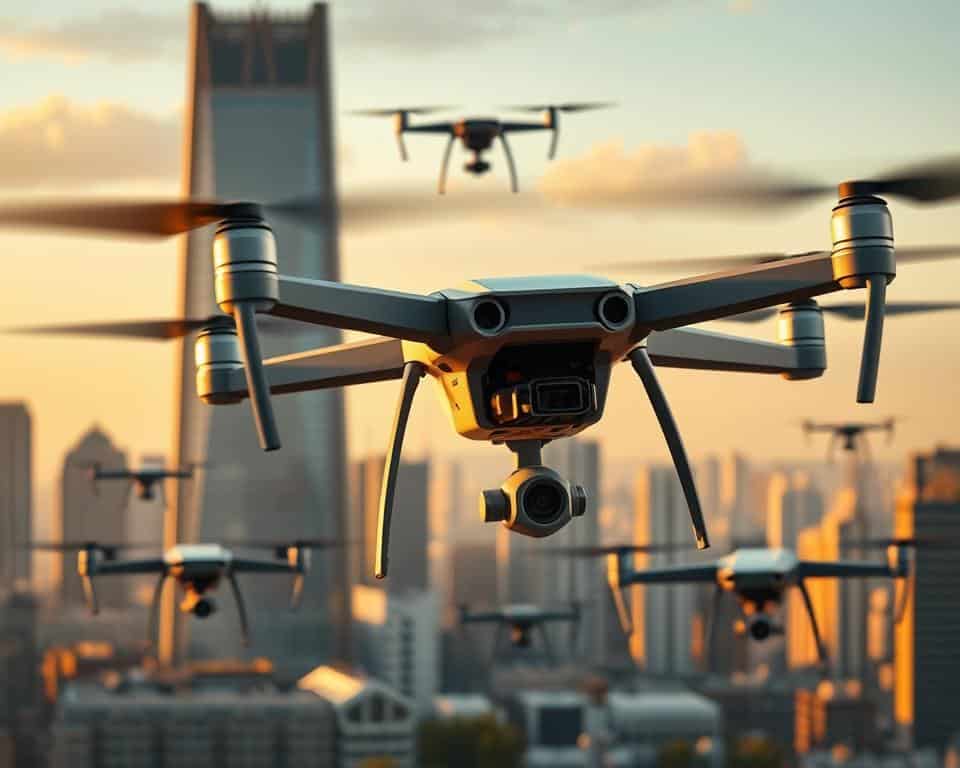
Consumer Segment Refreshes
The consumer drone market remains DJI’s bread and butter, with the company expected to introduce significant updates to its most popular product lines. These refreshes will likely focus on improved imaging capabilities, longer flight times, and more sophisticated autonomous features while maintaining the portability that users have come to expect.
Mavic 4 Series Predictions
The Mavic 4 series is anticipated to be DJI’s flagship consumer offering for 2025. Building on the success of the Mavic 3, the new model will likely feature a completely redesigned airframe with improved aerodynamics and noise reduction technology.
Camera improvements may include a larger 1.5-inch or even 2-inch sensor, potentially capable of 8K video recording at 30fps and 4K at up to 120fps. Enhanced low-light performance is expected to be a key selling point, with rumors suggesting a variable aperture lens system similar to what’s found in premium smartphones.
Battery technology advancements could push flight time beyond the 40-minute mark, setting a new standard for consumer drones. The controller might also see a significant redesign with an integrated high-brightness display, reducing the need for a separate smartphone.
Air 4 Potential Features
The Air 4 will likely continue to serve as DJI’s mid-range option, bridging the gap between the Mini and Mavic series. Expected upgrades include a 1-inch sensor capable of 4K/60fps video and 48MP photos, representing a significant step up from the current generation.
Flight time may increase to around 35 minutes, with improved obstacle avoidance sensors covering all six directions. The Air 4 might also inherit some of the advanced tracking capabilities previously reserved for higher-end models, making it an attractive option for solo content creators.
The next generation of DJI’s consumer drones will likely blur the line between professional and consumer equipment, bringing cinema-quality capabilities to price points that were unimaginable just a few years ago.
Professional Series Updates
DJI’s professional lineup is due for significant updates in 2025, with new models expected to cater to the increasingly sophisticated needs of filmmakers, photographers, and production companies. These high-end drones will incorporate cutting-edge camera technology and robust flight systems designed for demanding shooting conditions.
Inspire 4 Possibilities
The Inspire 4 is poised to become DJI’s ultimate cinematography drone, potentially featuring a modular camera system that supports multiple lens options. Rumors suggest it might accommodate a Micro Four Thirds or even APS-C sensor, bringing it closer to ground-based cinema camera capabilities.
Flight performance enhancements could include top speeds approaching 70 mph and wind resistance rated for up to 40 mph gusts. The dual-operator system will likely see improvements in transmission range and reliability, possibly extending beyond the current 9.3-mile limit.
Advanced production features may include ProRes RAW recording, built-in LUT support, and integration with professional color grading workflows. These capabilities would position the Inspire 4 as a serious tool for high-end commercial and film productions.
New Cinema Camera Integrations
Beyond the Inspire series, DJI may introduce new options for integrating third-party cinema cameras with their flight platforms. This could include updated versions of the Ronin camera system specifically designed for aerial use, supporting cameras from Sony, RED, and ARRI.
These systems would likely feature advanced gimbal technology capable of supporting heavier payloads while maintaining smooth movement and precise control. Integrated focus control systems and wireless video transmission would complete the package, offering filmmakers unprecedented creative flexibility.
| Drone Model | Expected Sensor Size | Video Capabilities | Flight Time | Key Features |
|---|---|---|---|---|
| Mavic 4 | 1.5-2 inch | 8K/30fps, 4K/120fps | 40+ minutes | Variable aperture, enhanced low-light performance |
| Air 4 | 1 inch | 4K/60fps | 35 minutes | 360° obstacle avoidance, advanced tracking |
| Inspire 4 | M4/3 or APS-C | 6K/60fps, ProRes RAW | 30 minutes | Interchangeable lenses, professional color workflows |
| FPV 2 | 1/1.3 inch | 4K/60fps HDR | 20 minutes | 120mph top speed, simplified controls |
New Product Categories
Perhaps the most exciting aspect of DJI’s 2025 lineup will be entirely new product categories that address emerging use cases and technologies. These innovations could open up new markets and applications for drone technology beyond what’s currently available.
Potential FPV Advancements
Building on the success of the DJI FPV, a second-generation model could make this exciting flight style more accessible to mainstream users. Improvements might include a simplified control scheme with intelligent flight modes that help beginners capture dynamic footage safely.
Camera quality will likely see a significant upgrade, possibly incorporating a 1/1.3-inch sensor capable of 4K/60fps HDR video. The digital transmission system could offer lower latency and higher resolution, enhancing the immersive flying experience.
Safety features may include enhanced return-to-home functionality and emergency brake systems that make FPV flying less intimidating for newcomers. These advancements would help bridge the gap between traditional camera drones and the high-speed, acrobatic capabilities of FPV models.
Specialized Niche Products
DJI may also introduce specialized drones designed for specific use cases beyond general photography and videography. One possibility is a compact indoor mapping drone equipped with LiDAR sensors for architectural documentation and construction monitoring.
Another potential offering is a long-endurance surveillance drone with enhanced thermal imaging capabilities for security applications. This model might feature a tethered power option for extended operation during events or emergency situations.
For content creators, DJI could develop a “social media drone” optimized for quick deployment and automatic capture of shareable moments. Such a device would prioritize simplicity and intelligent subject tracking over raw technical specifications, making aerial photography more accessible to casual users.
Next-Generation Camera Technology
Camera technology sits at the heart of DJI’s upcoming 2025 drone innovations, with significant upgrades expected across their entire product range. The imaging capabilities of drones have become a primary purchasing factor for both professionals and enthusiasts. DJI appears ready to push these boundaries further with substantial improvements in sensors, stabilization, and computational photography features that could dramatically enhance the quality of aerial imagery.
Sensor Improvements and Resolution Upgrades
The evolution of drone camera technology continues to accelerate, with DJI poised to implement larger and more capable image sensors throughout their lineup. These advancements will likely bridge the gap between consumer drones and professional photography equipment.
1-inch+ Sensors in Consumer Models
While DJI’s premium models like the Mavic 3 already feature 1-inch sensors, industry analysts expect this technology to become standard in mid-range consumer drones by 2025. Larger sensors capture more light, resulting in better low-light performance, improved dynamic range, and reduced noise in images.
The benefits of these larger sensors extend beyond image quality. They also enable greater creative flexibility through shallower depth of field effects, giving aerial photographers more tools for artistic expression.
8K Video Capabilities
The jump to 8K video recording is anticipated across more of DJI’s 2025 lineup. This resolution upgrade represents four times the pixel count of 4K, offering several advantages for content creators:
- Enhanced detail retention for professional productions
- Greater flexibility for cropping and reframing in post-production
- Future-proofing content as 8K displays become more common
- Improved quality when downsampling to 4K delivery

Advanced Stabilization Systems
Stable footage remains essential for professional-quality aerial imagery. DJI’s 2025 lineup is expected to feature significant advancements in both mechanical and electronic stabilization technologies.
Gimbal Technology Innovations
DJI’s mechanical gimbals have set industry standards for years, but the 2025 models may introduce several key improvements to drone gimbal technology:
More responsive motors with faster reaction times will help maintain stability even during rapid maneuvers or in challenging wind conditions. Expanded range of motion could allow for more creative shooting angles without digital distortion.
We may also see the introduction of adaptive gimbal systems that automatically adjust their parameters based on flight conditions and shooting modes.
Electronic Image Stabilization
Complementing physical stabilization, DJI’s electronic image stabilization (EIS) technology is expected to become more sophisticated. Advanced algorithms will likely work in tandem with mechanical gimbals to achieve unprecedented stability.
The next generation of EIS may incorporate predictive motion analysis, using AI to anticipate drone movements before they affect image quality. This hybrid approach could virtually eliminate unwanted motion artifacts even in challenging shooting scenarios.
Computational Photography Features
Perhaps the most exciting developments in DJI’s 2025 camera systems involve computational drone photography—where software and AI enhance hardware capabilities to produce results previously impossible with sensors alone.
HDR and Night Mode Enhancements
High Dynamic Range (HDR) imaging in drones has traditionally faced challenges due to moving subjects and changing light conditions. DJI’s 2025 models will likely feature advanced real-time HDR processing that can handle these complexities more effectively.
Dedicated night modes could transform low-light aerial photography. By combining multiple exposures and applying noise reduction algorithms, these features may enable clear, detailed night shots without the graininess typically associated with high ISO settings.
AI-Powered Image Processing
Artificial intelligence will play an increasingly important role in DJI’s image processing pipeline. AI image processing could enable several groundbreaking features:
- Automatic subject recognition and tracking with optimized exposure
- Scene-specific optimization that adjusts camera settings based on what’s being photographed
- Intelligent removal of unwanted elements like power lines or reflections
- Automatic color grading based on content type and lighting conditions
| Feature | Current DJI Technology (2023) | Expected 2025 Advancements | User Benefits |
|---|---|---|---|
| Sensor Size | 1-inch in premium models only | 1-inch+ standard in mid-range models | Better low-light performance, increased dynamic range |
| Video Resolution | 4K standard, 5.1K/8K in flagships | 8K across most models, 10K possible in flagships | Enhanced detail, greater post-production flexibility |
| Stabilization | 3-axis gimbals with basic EIS | Advanced hybrid stabilization systems | Professional-quality footage in challenging conditions |
| Computational Features | Basic HDR and scene recognition | Advanced AI processing with content-aware editing | Simplified workflow, previously impossible shot capabilities |
Flight Performance Enhancements
Flight performance is set to undergo dramatic transformation in DJI’s 2025 drone lineup with several key innovations. The upcoming models are expected to push boundaries in flight time, speed capabilities, and environmental adaptability. These improvements will directly address the most common pain points drone pilots face today while opening new possibilities for aerial photography and videography.
Battery Life and Flight Time Expectations
One of the most anticipated improvements in DJI’s 2025 lineup is significantly extended drone flight time. Current consumer models typically offer 30-40 minutes of air time, but industry insiders suggest the new releases could push beyond the 60-minute threshold for standard-sized drones.
New Battery Cell Technology
At the heart of these improvements is revolutionary drone battery technology. DJI is reportedly exploring solid-state batteries that offer higher energy density than traditional lithium-polymer cells. These batteries pack more power into the same physical space while reducing overall weight.
Early prototypes have demonstrated up to 40% more capacity compared to current battery technology. This advancement alone could extend flight times dramatically without increasing the drone’s weight or dimensions.
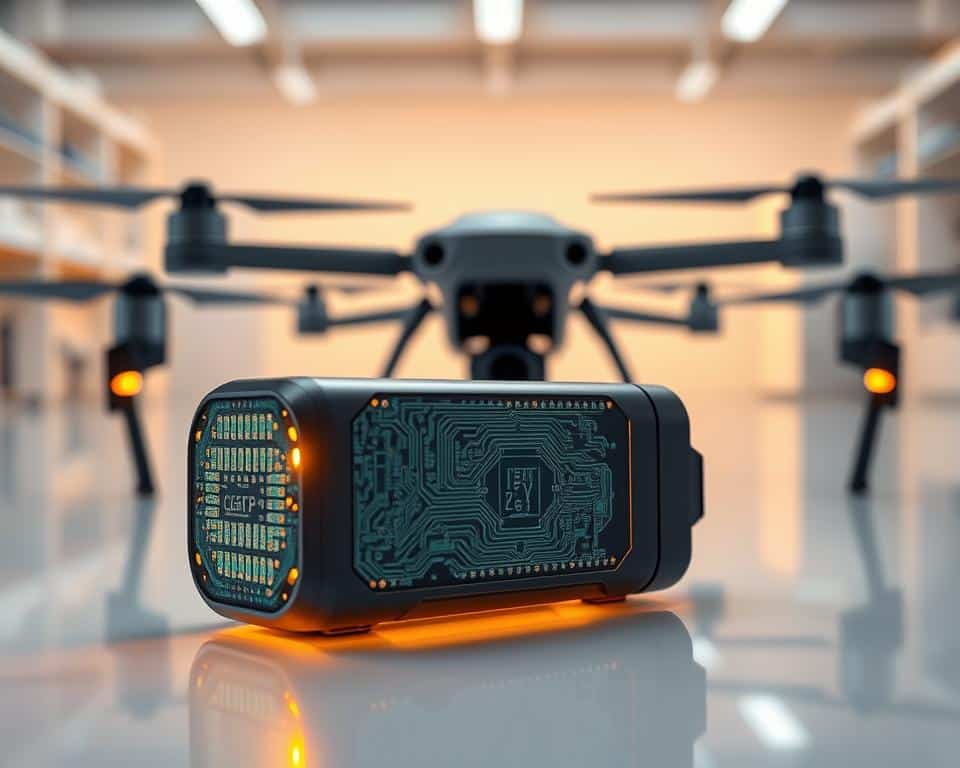
Beyond better batteries, DJI’s 2025 drones will likely feature more sophisticated power management systems. New processors will optimize energy consumption during different flight phases, conserving power during hovering and steady flight.
Intelligent power distribution will prioritize critical systems while dynamically adjusting power to non-essential functions. This smart approach to energy management could add 5-10 minutes of flight time even with existing battery technology.
Speed and Maneuverability Improvements
The 2025 lineup is expected to deliver impressive drone speed improvements that will benefit both recreational flyers and professional operators. Current flagship models top out around 45-50 mph, but new designs could push speeds closer to 60 mph while maintaining stability.
Motor Efficiency Advancements
Enhanced drone motor efficiency will be a key factor in these performance gains. DJI is developing next-generation brushless motors that deliver more thrust with less power consumption. These motors use advanced materials and optimized electromagnetic designs to reduce internal resistance and heat generation.
The new motors are expected to provide up to 15% more thrust while consuming 10% less power. This efficiency translates directly into better acceleration, higher top speeds, and more responsive handling.
Aerodynamic Design Changes
Complementing the motor improvements are subtle but significant aerodynamic refinements. The 2025 models will likely feature streamlined body shapes that reduce drag without compromising stability.
Engineers are also exploring innovative propeller designs with variable pitch capabilities. These props can adjust their angle during flight to optimize for different conditions—maximizing efficiency during cruising while providing extra thrust when needed for rapid maneuvers.
Wind Resistance and Environmental Adaptability
Perhaps the most practical improvements in the 2025 lineup will be enhanced drone wind resistance and environmental adaptability. Current models typically have wind resistance ratings of 20-25 mph, but the new generation aims to remain stable in winds up to 35 mph.
All-Weather Capabilities
True all-weather drones have been the holy grail for many professionals, and DJI appears ready to deliver. The 2025 models will likely feature IP56 or higher ratings, providing protection against dust and water spray from all directions.
This weatherproofing will extend to internal components, with sealed compartments for batteries and electronics. Specialized hydrophobic coatings on camera lenses will repel water droplets, ensuring clear footage even in light rain or misty conditions.
Temperature Tolerance Improvements
Operating temperature ranges will expand significantly in the 2025 lineup. While current models typically function between 32°F and 104°F (0°C to 40°C), the new drones are expected to handle temperatures from 14°F to 122°F (-10°C to 50°C).
This expanded range will be achieved through better thermal management systems and temperature-resistant materials. Battery heating technology will maintain optimal cell temperature in cold conditions, while advanced cooling systems will prevent overheating during intensive use in hot environments.
| Performance Metric | Current DJI Flagships (2023) | Expected 2025 Models | Improvement (%) |
|---|---|---|---|
| Maximum Flight Time | 30-40 minutes | 55-65 minutes | ~60% |
| Top Speed | 45-50 mph | 55-60 mph | ~20% |
| Wind Resistance | 20-25 mph | 30-35 mph | ~40% |
| Operating Temperature Range | 32°F to 104°F | 14°F to 122°F | ~100% |
| Weather Resistance Rating | None/Limited (IP43) | Substantial (IP56+) | Significant upgrade |
Artificial Intelligence and Autonomous Features
Artificial intelligence stands at the forefront of DJI’s 2025 innovation strategy, promising to deliver unprecedented autonomous capabilities to drone enthusiasts and professionals alike. The upcoming lineup is expected to leverage AI not just as an add-on feature, but as the core technology driving everything from flight safety to creative possibilities. These advancements will likely make complex aerial photography more accessible to beginners while giving professionals powerful new tools to push creative boundaries.
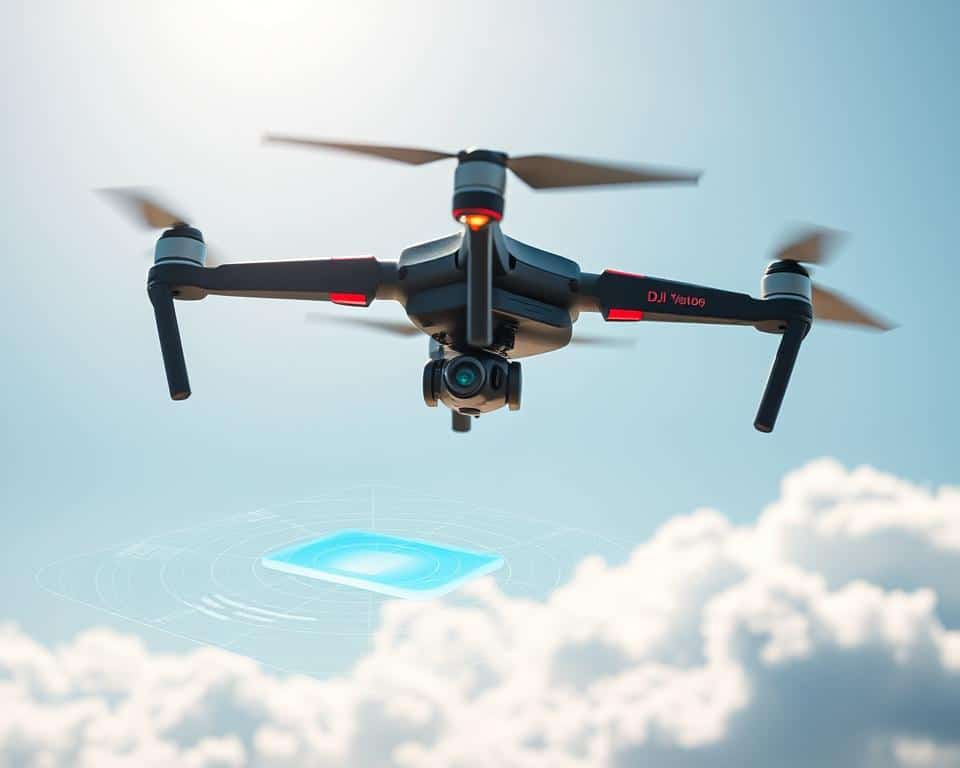
Advanced Obstacle Avoidance Systems
The 2025 DJI models are anticipated to feature dramatically improved obstacle avoidance technology that could redefine drone safety standards. These systems will likely build upon DJI’s existing APAS (Advanced Pilot Assistance Systems) with significant upgrades in both hardware and AI processing capabilities.
Omnidirectional Sensing Technology
Future DJI drones will likely employ a comprehensive array of visual, infrared, and ultrasonic sensors working in perfect harmony. This multi-sensor approach could provide true 360-degree awareness with no blind spots, allowing drones to detect obstacles from any direction, even in challenging lighting conditions or when flying backward at high speeds.
Real-time 3D Mapping
Beyond simply detecting obstacles, 2025 models may create detailed three-dimensional maps of their surroundings in real-time. This advanced spatial awareness would enable autonomous drones to not just avoid obstacles but intelligently navigate around them, finding optimal flight paths through complex environments like forests or urban landscapes.
Intelligent Flight Modes
DJI’s 2025 lineup will likely introduce next-generation intelligent flight modes that combine ease of use with professional-grade results. These AI-powered modes will handle complex flight patterns and camera movements automatically, allowing pilots to focus on creativity rather than technical execution.
Automated Cinematography Features
Future drones may offer sophisticated automated drone cinematography capabilities that mimic the techniques of professional filmmakers. Imagine selecting a cinematic style—like “epic reveal” or “intimate follow”—and having the drone automatically execute perfect camera movements with appropriate speed, height, and angle adjustments based on the subject and environment.
One-Touch Complex Maneuvers
The 2025 lineup could feature one-touch activation of intricate flight patterns that would normally require expert piloting skills. These might include spiral ascents around structures, perfectly timed reveals over landscape features, or dynamic transitions between subjects—all executed with precision through a single tap on the controller.
AI-Powered Subject Tracking
Perhaps the most exciting advancements will come in drone tracking capabilities, where AI algorithms will transform how drones follow and film subjects. These systems will likely offer unprecedented intelligence in maintaining optimal framing regardless of subject movement or environmental challenges.
Multi-Subject Recognition
Unlike current tracking systems that typically focus on a single subject, 2025 models may simultaneously track multiple people or objects. This would be particularly valuable for sports, events, and action sequences where maintaining visual awareness of several moving subjects is crucial for telling a complete story.
Predictive Movement Algorithms
The next generation of tracking AI won’t just react to movements—it will anticipate them. By analyzing patterns and learning from subject behavior, these drones could predict where a mountain biker will emerge from trees or how a skateboarder will complete a trick, positioning the camera perfectly before the action even happens.
These AI and autonomous features represent the cutting edge of what’s possible in aerial imaging technology. By making sophisticated flight and filming techniques accessible through intelligent automation, DJI’s 2025 lineup promises to democratize professional-quality drone photography and videography like never before.
Connectivity and Control Systems
As we look toward DJI’s 2025 releases, the evolution of connectivity and control systems stands out as a game-changing aspect of their new drone technology. The way pilots interact with their aircraft and the reliability of that connection directly impacts everything from creative possibilities to operational efficiency. DJI’s upcoming innovations in this space promise to address current limitations while introducing entirely new capabilities that could transform aerial imaging workflows.
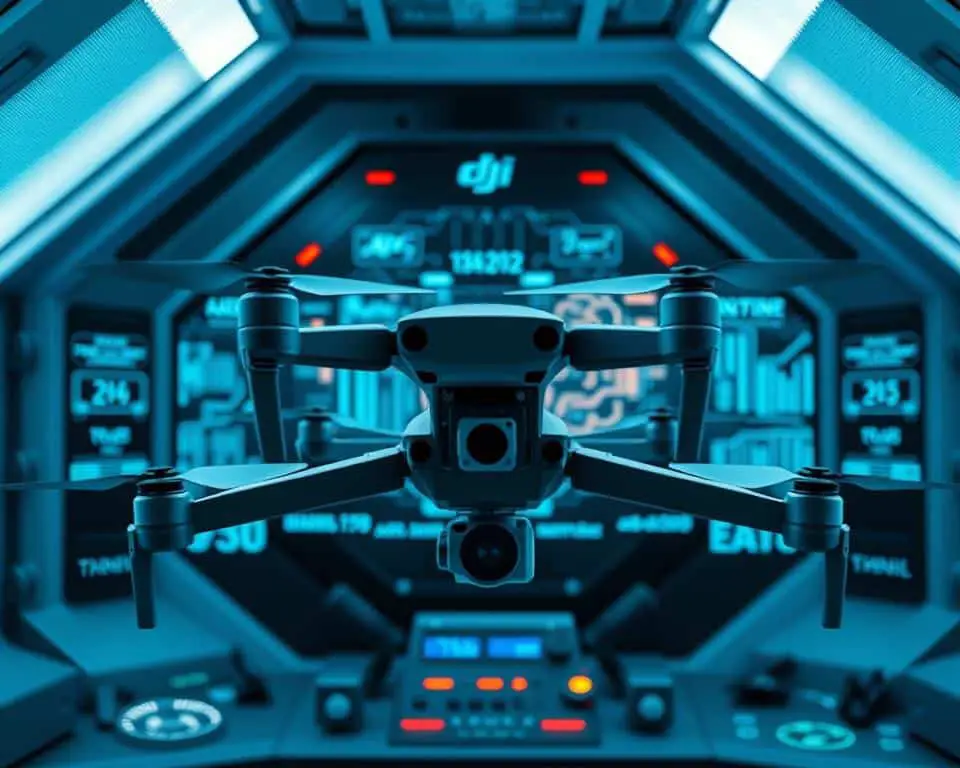
Transmission Technology Advancements
The backbone of any drone system lies in its transmission technology, and DJI’s 2025 lineup is expected to push these boundaries significantly. Current O3+ and Ocusync systems have set high standards, but the next generation will likely introduce even more robust solutions.
Range and Signal Stability
DJI’s 2025 drones will likely feature enhanced radio protocols that extend reliable control range beyond the current 15km benchmark. Industry analysts anticipate new frequency utilization techniques that could dramatically improve signal penetration in urban environments and dense forests. These drone range improvements may incorporate adaptive frequency hopping that automatically selects the clearest channels in real-time, virtually eliminating signal dropouts even in challenging RF environments.
Bandwidth Improvements for Video Feed
Perhaps most exciting for content creators is the expected leap in video transmission capabilities. The next generation of drone transmission technology will likely support 4K 60fps live feeds with minimal latency—possibly even 8K monitoring for high-end models. This bandwidth expansion would enable directors and cinematographers to make precise creative decisions based on exactly what the drone is capturing, rather than approximations.
| Transmission Feature | Current DJI (2023) | Expected 2025 Models | Practical Benefit |
|---|---|---|---|
| Maximum Range | 15km (O3+) | 25-30km | Extended filming locations |
| Live Feed Quality | 1080p/60fps | 4K/60fps or 8K/30fps | Precise framing decisions |
| Latency | 120ms | Under 80ms | More responsive control |
| Signal Stability | Multi-frequency | AI-adaptive frequency | Near-zero disconnections |
Controller Innovations
The physical interface between pilot and aircraft is due for significant upgrades in DJI’s 2025 lineup, with the RC Pro successor leading these innovations.
RC Pro Successor Features
The DJI RC Pro successor will likely feature a more powerful computing platform capable of on-controller editing and footage review. Industry sources suggest it may incorporate haptic feedback systems that provide physical alerts for obstacle proximity or battery status. The display technology could evolve to include higher brightness (1500+ nits) and possibly even flexible OLED panels for improved visibility in all conditions.
The next generation of drone controllers won’t just be about buttons and sticks—they’ll become intelligent command centers that process and deliver information in ways that feel almost intuitive to the pilot.
Smartphone Integration Options
While professional controllers remain essential for high-end operations, DJI is expected to enhance smartphone integration for their consumer models. The 2025 lineup may introduce a hybrid approach where smartphones can serve as secondary screens while maintaining professional-grade control through dedicated hardware. This would allow casual users to leverage familiar interfaces while still accessing advanced drone connectivity features.
Cloud Connectivity and Live Streaming
Perhaps the most transformative aspect of DJI’s 2025 connectivity strategy will be the seamless integration with cloud services and social platforms.
Real-time Data Synchronization
Future DJI drones will likely feature automatic cloud backup during flight, securely storing footage even if the physical aircraft is lost or damaged. Thisreal-time synchronizationcould revolutionize production workflows by making footage immediately available to post-production teams while the drone is still in the air. For enterprise users, this means instant data availability for analysis and decision-making.
Social Media Integration
The demand for immediate content sharing continues to grow, and DJI’s 2025 lineup will likely respond with enhanced drone live streaming capabilities. Direct integration with platforms like YouTube, Instagram, and specialized services like DroneDeploy would allow for one-touch broadcasting of aerial footage.
Professional streamers and event coverage teams will benefit from advanced features like automatic shot switching based on AI-identified points of interest and real-time audience engagement tools that could influence flight patterns or camera movements based on viewer feedback.
These connectivity advancements collectively represent a significant leap forward in how drones function within broader creative and professional ecosystems. Rather than standalone tools, DJI’s 2025 drones will likely operate as nodes in interconnected networks that span from the sky to the cloud to social media platforms—all with minimal friction for the end user.
Expected Updates to the Mini Series
The highly anticipated updates to DJI’s Mini series in 2025 are expected to redefine compact drone capabilities while maintaining the crucial sub-250g weight classification. These ultralight flyers have become favorites among travelers, content creators, and drone beginners seeking portability without sacrificing quality. The upcoming iterations promise to push technological boundaries while staying under regulatory weight thresholds in many regions.
Mini 5 Specifications and Features
Building on the success of previous models, the DJI Mini 5 is rumored to incorporate significant upgrades that could make it a formidable competitor even against larger drones. Industry analysts expect DJI to focus on addressing the few remaining limitations of the Mini series while preserving its core advantages.
Camera and Flight Performance
The Mini 5’s camera system is likely to see substantial improvements, potentially featuring a larger 1/1.3-inch sensor compared to the 1/1.7-inch sensor in the Mini 4 Pro. This upgrade would enhance low-light performance and dynamic range – areas where compact drones typically struggle.
Rumors suggest the Mini 5 might include variable aperture capabilities, a feature previously reserved for DJI’s premium models. This would give creators greater control over depth of field and exposure without relying solely on ND filters.
Flight performance enhancements are expected to include extended battery life, pushing beyond the current 30-minute mark toward 35-40 minutes of air time. Wind resistance ratings may improve from Level 5 to Level 6, making the Mini 5 more reliable in challenging conditions despite its lightweight frame.
Size and Weight Considerations
The engineering challenge for DJI remains packing more technology into the Mini 5 while keeping it under the critical 250g threshold. This weight limit exempts the drone from registration requirements in many countries, including the United States, making it particularly appealing to casual users and travelers.
To achieve this balance, DJI may employ:
- Advanced composite materials for lighter but stronger structural components
- More efficient circuit design to reduce component size and weight
- Redesigned battery technology with higher energy density
- Folding mechanisms that maximize portability without compromising stability
Potential Mini Pro Model
Perhaps the most exciting speculation surrounds the possibility of a new Mini Pro model in 2025. This would represent DJI’s effort to create a premium sub-250g drone that bridges the gap between ultraportable and professional-grade equipment.
Advanced Features in Sub-250g Category
A Mini Pro model would likely push the boundaries of what’s possible in the lightweight drone category. Potential advanced features could include:
“The sub-250g category represents the perfect balance between regulatory freedom and creative potential. DJI’s continued innovation in this space could fundamentally change how we think about professional-grade portable drones.”
The obstacle avoidance system might expand to offer omnidirectional sensing – a significant upgrade from the current forward, backward, and downward sensors. This would put the Mini Pro’s safety features on par with much larger drones in DJI’s lineup.
Professional Capabilities in Compact Form
What would truly set a Mini Pro apart would be its professional imaging capabilities. Industry experts anticipate features like:
| Feature | Current Mini 4 Pro | Potential Mini Pro 2025 | Benefit |
|---|---|---|---|
| Video Recording | 4K/60fps | 4K/120fps or 6K/30fps | Enhanced slow motion and resolution |
| Color Profiles | Normal and D-Cinelike | Normal, D-Cinelike, and D-Log | Greater post-processing flexibility |
| Photo Format | JPEG and 12-bit RAW | JPEG and 14-bit RAW | Improved dynamic range and editing latitude |
| Aperture | Fixed f/1.7 | Variable f/1.7-f/4.0 | Creative depth control and exposure flexibility |
For content creators and travel photographers, such a drone would represent the holy grail of portable aerial imaging – professional-grade results without the burden of carrying larger equipment. The Mini Pro could become the go-to option for those who need maximum portability without sacrificing image quality.
With these potential updates, DJI’s 2025 Mini series looks set to continue its dominance in the lightweight drone cameras market while pushing the boundaries of what portable drone performance can achieve. The combination of regulatory advantages and increasingly professional capabilities makes these upcoming releases particularly exciting for both casual users and professionals alike.
Professional Cinema Drone Innovations
As we look toward 2025, DJI’s high-end cinema drones are expected to undergo transformative upgrades that will excite professional cinematographers worldwide. The professional segment represents DJI’s technological pinnacle, where cutting-edge innovations debut before filtering down to consumer models. These upcoming advancements promise to narrow the gap between aerial and ground-based cinema equipment.
Inspire 3 Successor Expectations
The anticipated DJI Inspire 4 (or whatever DJI names its next flagship) will likely build upon the revolutionary foundation established by the Inspire 3. Industry experts predict significant leaps in capabilities that could redefine professional aerial cinematography.
Camera System Upgrades
The next-generation cinema drone cameras will potentially feature interchangeable lens systems with larger sensors approaching Super 35 or even full-frame capabilities. This advancement would dramatically improve low-light performance and provide the shallow depth of field cinematographers crave.
Color science improvements may include enhanced dynamic range exceeding 14 stops and refined color profiles specifically designed for seamless integration with ground footage from cinema cameras like ARRI and RED.
Increased drone payload capacity represents another frontier for professional cinema drones. The 2025 models may support heavier camera packages while maintaining or even extending flight times. This enhancement would allow cinematographers to mount premium cinema lenses and potentially additional equipment like wireless focus systems.
Dual-operator configurations could see improvements with more responsive controls and enhanced mechanical stability, giving camera operators unprecedented precision for complex shots.
Integration with Professional Workflows
DJI’s 2025 professional drones will likely feature deeper integration with established film production workflows. These improvements will address the needs of high-end productions where efficiency and reliability are paramount.
ProRes and RAW Recording Options
ProRes drone recording capabilities will likely expand to include higher bit rates and more sophisticated color sampling options. We may see support for ProRes RAW and potentially new codecs optimized specifically for aerial footage, balancing quality with manageable file sizes.
Storage solutions might evolve to accommodate these data-intensive formats, possibly including hot-swappable SSD options or direct recording to external media.
Studio-to-Field Connectivity
The future of aerial filmmaking technology includes seamless connectivity between drones and production environments. New features may include direct streaming to production monitors, remote camera parameter adjustments by directors of photography, and integration with industry-standard color management systems.
Cloud-based workflows could allow for immediate footage review and even preliminary color grading while still on location, dramatically accelerating post-production timelines.
| Feature | Current Inspire 3 | Expected Inspire 4 | Industry Impact |
|---|---|---|---|
| Sensor Size | 4/3 CMOS | Super 35 or Full-Frame | Cinematic quality indistinguishable from ground cameras |
| Recording Format | ProRes 422 HQ, RAW | ProRes RAW, Advanced Codecs | Seamless integration with premium post-production workflows |
| Payload Capacity | ~1.5kg effective | 2.5kg+ expected | Compatibility with cinema-grade lenses and accessories |
| Connectivity | O3 Video Transmission | Enhanced studio integration | Real-time collaboration between field and production teams |
Regulatory Considerations and Compliance Features
Beyond camera specs and flight performance, DJI’s 2025 drones will showcase sophisticated regulatory compliance technologies that could reshape the industry. As drone adoption continues to accelerate worldwide, manufacturers must navigate an increasingly complex patchwork of national and local regulations. DJI appears poised to transform these challenges into competitive advantages through innovative compliance solutions that maintain user experience while satisfying regulatory requirements.
The regulatory landscape for drones continues to evolve rapidly, with authorities worldwide implementing stricter oversight to ensure safety and security. DJI’s approach to these challenges will likely define their success in key markets, particularly as commercial applications expand into sensitive urban environments.
Remote ID Implementation
Remote ID requirements—often called “digital license plates” for drones—are becoming standard worldwide. DJI’s 2025 lineup will likely feature advanced Remote ID systems that seamlessly adapt to regional requirements without user intervention. These systems will likely use geolocation to automatically apply the appropriate broadcast protocols based on where the drone is operating.
Global Compliance Solutions
Rather than requiring separate models for different markets, DJI may implement a unified compliance architecture that dynamically adjusts to local regulations. This could include:
- Automatic regulatory updates via firmware
- Region-specific broadcast modes that activate based on GPS location
- Simplified compliance verification for professional operators
Geofencing and Safety Features
DJI’s 2025 lineup will likely feature significantly enhanced drone geofencing technology with greater precision and flexibility. These systems will provide more accurate airspace awareness, potentially incorporating real-time updates about temporary flight restrictions and emergency situations.
The next generation of geofencing will balance safety with accessibility, particularly for authorized professional users who need to operate in otherwise restricted areas.
Customizable Safety Parameters
Professional users may benefit from more granular control over safety systems, including:
- Credential-based access to restricted airspaces for authorized operators
- Customizable altitude and distance limitations based on mission parameters
- Enhanced return-to-home features with intelligent obstacle avoidance
Noise Reduction Technology
As drones increasingly operate in populated areas, noise pollution has become a significant concern. DJI’s 2025 lineup will likely incorporate substantial quiet drone technology advancements to address this issue. Innovations in propeller design, motor efficiency, and sound dampening materials could dramatically reduce the acoustic footprint of these devices.
These improvements aren’t merely about compliance—they open new possibilities for drone operations in noise-sensitive environments like urban centers, film sets, and wildlife observation.
Urban Flight Adaptations
The push toward quieter drones aligns perfectly with the growing demand for urban drone operations. DJI’s 2025 models may feature:
- Specialized flight modes that optimize for noise reduction in populated areas
- Adaptive propulsion systems that adjust based on environmental conditions
- Sound profile analysis tools to help operators minimize disturbance
These urban-focused adaptations could help normalize drone presence in cities while addressing common noise complaints that have limited adoption in densely populated areas.
Conclusion: The Future of Aerial Imaging with DJI
DJI’s 2025 drone lineup promises to reshape aerial imaging with groundbreaking advancements across all market segments. The next-generation DJI drones will likely blend improved camera systems, extended flight times, and smarter AI features into packages that push creative boundaries for both hobbyists and professionals.
Looking at the DJI innovation roadmap, we can expect the gap between consumer and professional equipment to narrow further. The Mini series will continue bringing professional-quality results to beginners, while the Mavic and Air lines will incorporate features once reserved for cinema drones.
The 2025 drone technology trends point toward more autonomous flight capabilities, allowing creators to focus on storytelling rather than piloting. With enhanced sensors and processing power, these drones will navigate complex environments with minimal user input.
Aerial imaging advancements will extend beyond hardware improvements. New software tools will simplify post-production workflows, making professional-grade editing accessible to casual users while giving professionals more creative control.
The future of drone technology isn’t just about better photos and videos—it’s about creating tools that open new possibilities. From automated inspection systems to immersive aerial perspectives, DJI’s upcoming innovations will continue to transform how we capture, share, and experience our world from above.
While these predictions are based on current trajectories and industry patterns, DJI has consistently surprised users with unexpected features. Whatever specific forms these new drones take, they’ll certainly continue DJI’s tradition of making the sky more accessible to creators everywhere.

